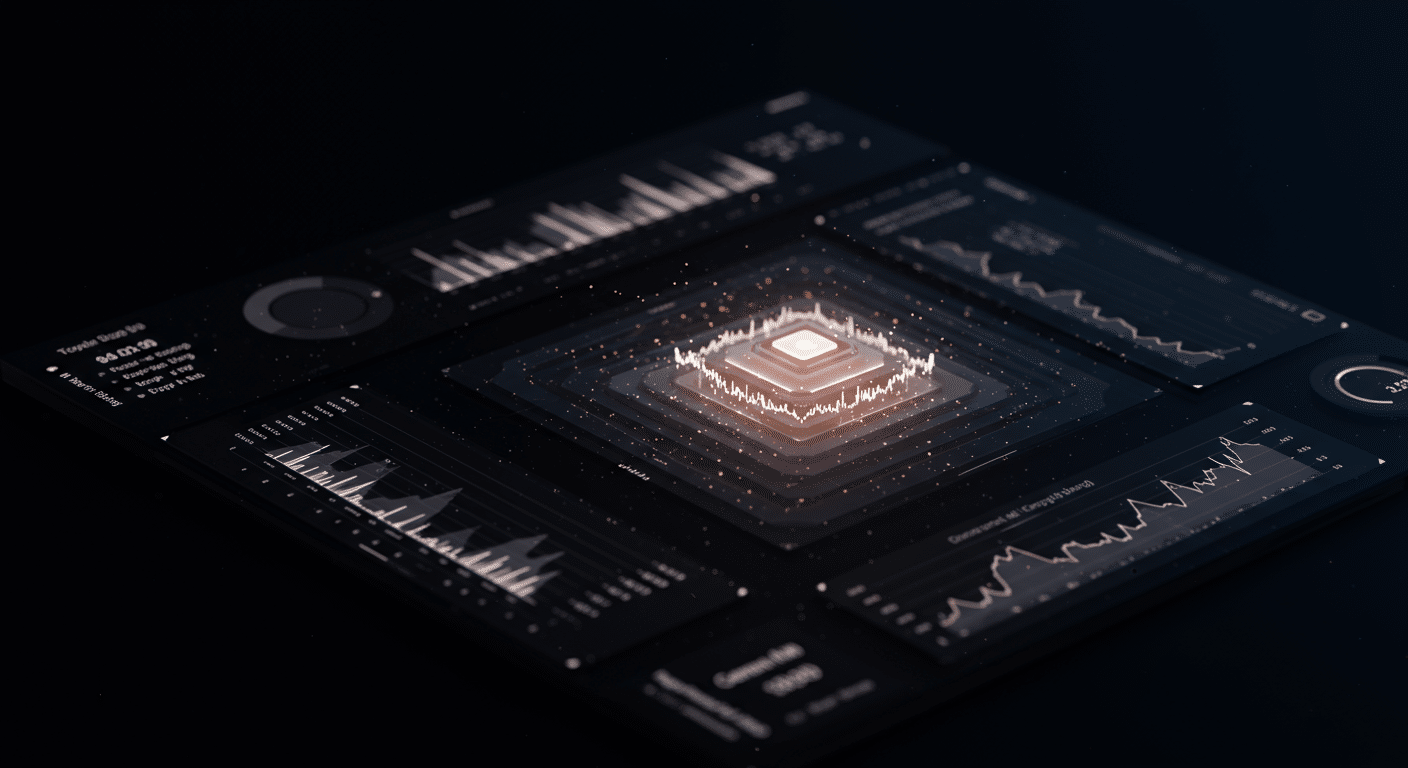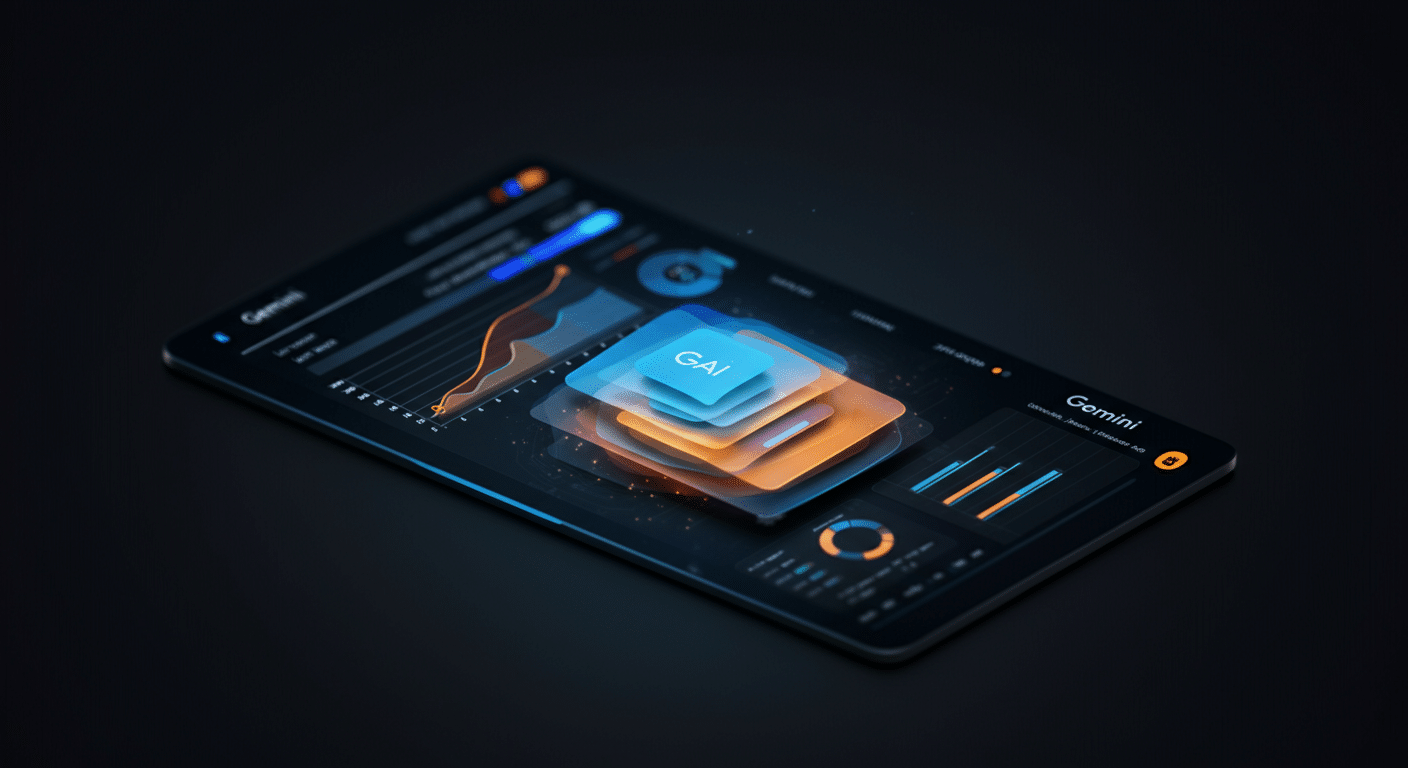New to Gemini (Google) AI? 🤔 Get up to speed fast! This guide breaks down its tech, uses, team, & future based on trending insights!#GeminiAI #GoogleAI #MultimodalAI
🎧 Listen to the Audio
If you’re short on time, check out the key points in this audio version.
📝 Read the Full Text
If you prefer to read at your own pace, here’s the full explanation below.
1. Basic Info

John: Let’s start with the basics of Gemini, Google’s advanced AI technology. In the past, AI models were often limited to handling one type of data, like text or images separately. Currently, Gemini stands out as a multimodal AI model, meaning it can process and understand multiple types of information simultaneously, such as text, images, audio, video, and code. This solves the problem of fragmented AI experiences where you’d need different tools for different tasks. What makes it unique, based on trending posts from official Google DeepMind accounts on X, is its ability to reason and generate responses across these modalities, almost like a human brain juggling senses.
Lila: That sounds fascinating! So, for beginners, could you compare it to something everyday? Like, is it similar to a smartphone that handles calls, photos, and apps all in one device, instead of having separate gadgets for each?
John: Exactly, Lila. That’s a great analogy. In the present, Gemini integrates these capabilities seamlessly, allowing for more natural interactions. For instance, posts from verified Google DeepMind on X highlight how it can listen to audio, understand speech nuances, and even generate code based on visual inputs. This uniqueness comes from its design to be flexible across sizes – like Ultra for complex tasks, Pro for balanced performance, and Nano for on-device efficiency – making it accessible for various applications.
Lila: Oh, I see. And looking ahead, does this mean Gemini could evolve to handle even more real-world problems, like assisting in education or healthcare by combining data types?
John: Precisely. As of now, its core strength is in solving integration issues in AI, setting it apart from single-mode models. We’ll dive deeper into that later.
Lila: Cool, that really helps paint the picture for newcomers!
2. Technical Mechanism

John: Now, let’s break down how Gemini works technically, keeping it simple for beginners. At its heart, Gemini uses something called neural networks, which are like digital brains made of interconnected nodes that learn patterns from data. In the past, models relied heavily on supervised learning, but currently, Gemini employs advanced techniques like multimodal training, where it learns from diverse data sources simultaneously.
Lila: Neural networks sound complex. Can you explain them like a recipe? You input ingredients (data), mix them through layers (processing), and output a dish (response)?
John: Spot on, Lila. That’s a tasty analogy! Presently, Gemini also incorporates reinforcement learning from human feedback, or RLHF, which is like training a pet with rewards – it refines responses based on what humans prefer. Trending posts from Google DeepMind on X emphasize its end-to-end processing of raw audio, meaning it handles signals directly without intermediate steps, improving accuracy in understanding speech and environments.
Lila: Interesting! So, for things like reasoning, does it use something special? I’ve heard of ‘thinking’ modes in AI.
John: Yes, as of now, the latest versions include enhanced reasoning, like in Gemini 2.5, where it can ‘think’ through problems step by step. This is achieved via techniques that allow parallel processing of ideas, comparing and refining them, much like brainstorming in a team meeting. Official X posts describe it as generating parallel streams of thought for better answers.
Lila: That makes sense. Looking ahead, could these mechanisms evolve to include more real-time adaptations?
John: Absolutely, building on current foundations for even smarter AI.
3. Development Timeline
John: Tracing Gemini’s development timeline gives us a clear view. In the past, specifically around December 2023, Google DeepMind announced the initial Gemini model on X, touting it as their most capable multimodal AI, handling text, code, audio, images, and video with state-of-the-art performance.
Lila: Wow, that was the starting point? What happened next?
John: Yes, building on that, in late 2024, they released Gemini 2.0, as shared in official posts, introducing lower latency and better performance for agentic tasks. Currently, as of August 2025, Gemini 2.5 Deep Think is the highlight, with posts from Google DeepMind describing it as capable of parallel thinking and reinforcement learning for complex problem-solving, like in math and coding.
Lila: So, it’s evolving quickly. What’s coming next?
John: Looking ahead, based on trending X discussions from the team, we can expect integrations like Gemini Robotics On-Device for efficient, offline robot operations, and further enhancements in reasoning modes. The timeline shows a progression from basic multimodality to advanced thinking capabilities.
Lila: That’s exciting! It seems like each update builds directly on the last.
4. Team & Community
John: The team behind Gemini is rooted in Google DeepMind, a group of experts in AI research. In the past, key figures like those from DeepMind’s founding have driven innovations in areas like AlphaGo. Currently, the team’s backgrounds include machine learning pioneers, as evident from their X posts sharing breakthroughs in multimodal AI.
Lila: Who are some standout members? And how’s the community reacting?
John: Presently, the community on X, including verified engineers and devs, is buzzing with excitement. Posts from official accounts highlight collaborations with researchers using Gemini for tasks like math exploration and voxel art creation. Reactions are positive, with users praising its reasoning for real-world applications.
Lila: Any specific discussions standing out?
John: Yes, trending threads discuss its adaptability, like in robotics, with community feedback on X from domain experts noting improved efficiency. Looking ahead, the team seems focused on expanding community involvement through experimental access.
Lila: It’s great to see such active engagement!
5. Use-Cases & Future Outlook

John: Gemini’s use-cases are diverse today. Currently, it’s used for transcription with nuanced audio understanding, as per Google DeepMind’s X posts, and generating bespoke experiences like custom interfaces from user intent.
Lila: Real-world examples? Like in daily life?
John: Absolutely, in education for multimodal learning aids, or in creative fields for coding and design. Posts highlight its role in robotics, enabling adaptable tasks without constant internet. Looking ahead, experts on X anticipate applications in environmental monitoring, like tracking deforestation with AI models integrated with Gemini.
Lila: That sounds impactful! Any future visions?
John: Yes, future outlooks include enhanced strategic planning and creativity, potentially revolutionizing industries like healthcare and research.
Lila: Can’t wait to see that unfold!
6. Competitor Comparison
- Compare with at least 2 similar tools
- Explain in dialogue why Gemini (Google) is different
John: When comparing Gemini to competitors like OpenAI’s GPT models and Anthropic’s Claude, it’s key to note differences. In the past, GPT focused mainly on text, while currently, Gemini’s multimodal edge shines, processing audio and video natively, as per X posts from DeepMind.
Lila: How does it stack up against Claude?
John: Claude emphasizes safety, but Gemini differentiates with on-device capabilities like Nano, enabling offline use. Presently, its reasoning in 2.5 Deep Think allows parallel thinking, setting it apart for complex tasks, unlike competitors’ linear approaches.
Lila: So, uniqueness in integration?
John: Exactly. Looking ahead, Gemini’s robotics focus could outpace others in physical applications.
Lila: That makes Gemini stand out!
7. Risks & Cautions
John: While impressive, Gemini has risks. Currently, limitations include potential biases in training data, leading to inaccurate responses, as discussed in expert X posts. Security flaws could arise from multimodal inputs if not handled properly.
Lila: Ethical questions too?
John: Yes, ethical concerns like privacy in audio processing. In the past, similar AIs faced bias issues; now, cautions include over-reliance, where users might trust AI without verification. Looking ahead, ongoing refinements aim to mitigate these.
Lila: Important to be aware!
John: Absolutely, always approach with caution.
Lila: Thanks for highlighting that.
8. Expert Opinions
John: Expert opinions on X provide valuable insights. One verified AI researcher paraphrased in posts praises Gemini 2.5’s parallel thinking for boosting math discovery, noting it mirrors human brainstorming.
Lila: Any others?
John: Another from a domain expert highlights its strengths in creative tasks like web design and coding, emphasizing improved accuracy through refinement techniques.
Lila: Sounds promising!
John: Indeed, these reflect current sentiment.
9. Latest News & Roadmap
John: Latest news from X shows Gemini 2.5 Deep Think rolling out for subscribers, with posts detailing its brainstorming capabilities. Currently, it’s being tested in apps for enhanced reasoning.
Lila: What’s on the roadmap?
John: Looking ahead, integrations like robotics and environmental AI are expected, based on official announcements. Roadmap includes broader access and new features for efficiency.
Lila: Exciting developments!
John: Yes, stay tuned.
10. FAQ
Question 1: What is Gemini exactly?
John: Gemini is Google’s multimodal AI model that handles text, images, audio, video, and code.
Lila: So, it’s like an all-in-one AI assistant?
Question 2: How does Gemini differ from other AIs?
John: It excels in native multimodality and reasoning, unlike text-focused competitors.
Lila: That means better integration for tasks?
Question 3: Is Gemini free to use?
John: Basic versions are accessible, but advanced like Ultra require subscriptions.
Lila: Good for beginners to start free?
Question 4: Can Gemini help with coding?
John: Yes, it generates and refines code using its reasoning capabilities.
Lila: Perfect for learning programmers?
Question 5: What are the privacy concerns?
John: It processes personal data, so users should review Google’s policies.
Lila: Always check settings?
Question 6: What’s next for Gemini?
John: Expansions into robotics and deeper thinking modes.
Lila: Will it get smarter over time?
11. Related Links
- Official website (if any)
- GitHub or papers
- Recommended tools
Final Thoughts
John: Looking at what we’ve explored today, Gemini (Google) clearly stands out in the current AI landscape. Its ongoing development and real-world use cases show it’s already making a difference.
Lila: Totally agree! I loved how much I learned just by diving into what people are saying about it now. I can’t wait to see where it goes next!
Disclaimer: This article is for informational purposes only. Please do your own research (DYOR) before making any decisions.
